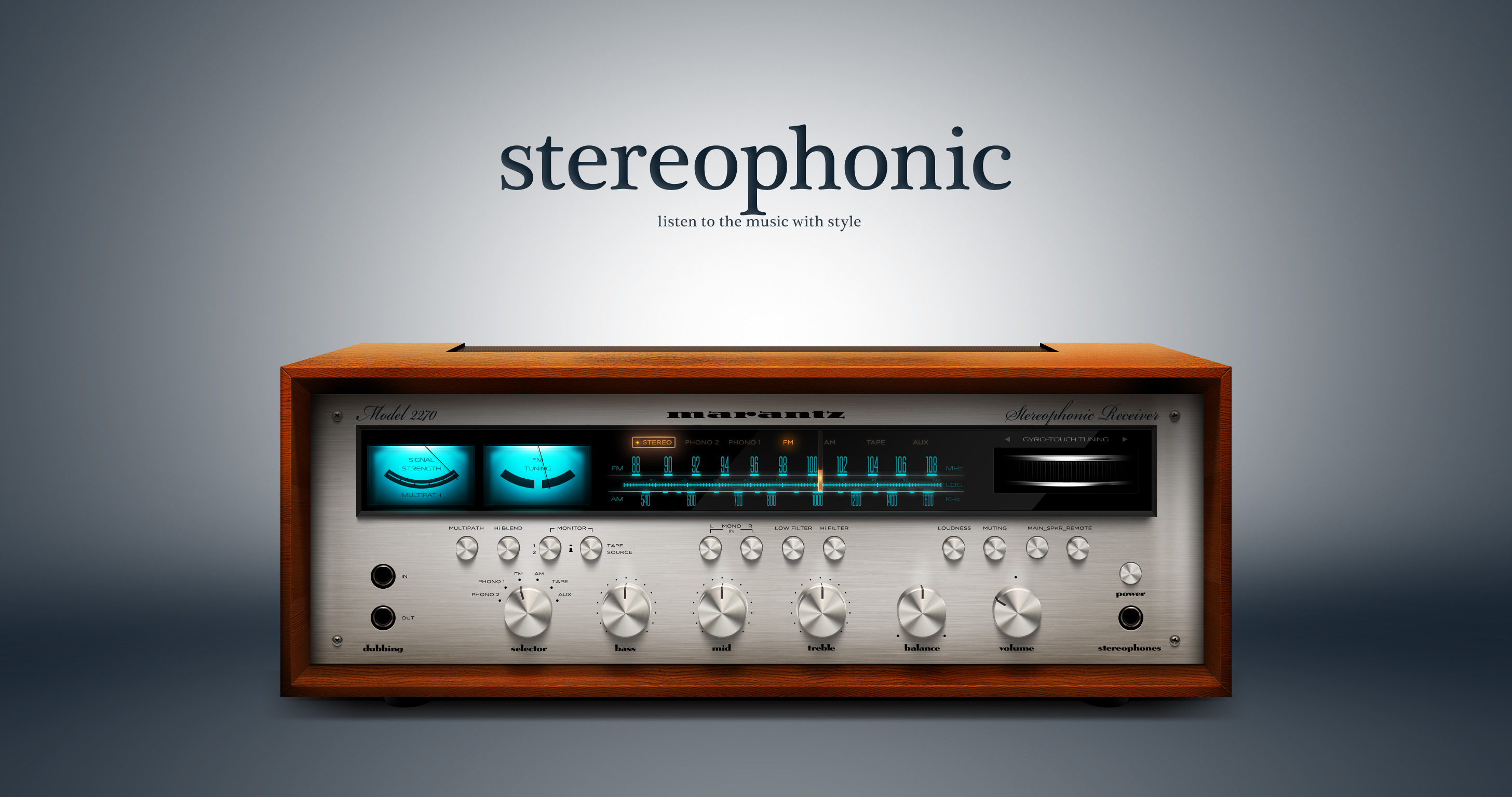Stereophonic Sound

Stereophonic sound is a method of recording and reproducing sound that creates a more realistic and immersive listening experience by simulating the natural way we hear. Unlike monophonic sound, which uses a single channel to deliver sound from a single point, stereophonic sound uses two or more channels to create the illusion of sound coming from different directions.
Stereophonic sound is achieved by recording sound using two or more microphones placed at different locations. The signals from these microphones are then mixed and sent to two or more speakers, which are placed at different locations in the listening area. This creates the illusion of sound coming from different directions, as the brain interprets the differences in volume and timing between the signals from the different speakers.
Methods of Creating Stereophonic Sound
There are several different methods used to create stereophonic sound, including:
- Binaural recording: This method uses two microphones placed inside a dummy head to simulate the way sound is heard by the human ear. The resulting recording creates a very realistic sense of space and directionality.
- Phase shifting: This method uses two or more microphones placed at different distances from the sound source. The signals from these microphones are then phase-shifted to create the illusion of sound coming from different directions.
- Amplitude panning: This method uses two or more speakers to create the illusion of sound coming from different directions by varying the amplitude of the sound signal sent to each speaker.
Applications of Stereophonic Sound
Stereophonic sound is used in a wide variety of applications, including:
- Music: Stereophonic sound is used in music to create a more immersive and realistic listening experience. It allows listeners to hear the different instruments and vocals in a song as if they were coming from different directions, creating a more natural and engaging soundscape.
- Film: Stereophonic sound is used in film to create a more immersive and realistic experience for viewers. It allows viewers to hear the sounds of the film coming from different directions, creating a more realistic sense of space and atmosphere.
- Gaming: Stereophonic sound is used in gaming to create a more immersive and engaging experience for players. It allows players to hear the sounds of the game coming from different directions, creating a more realistic sense of space and environment.
Stereophonic Equipment
Stereophonic equipment refers to devices that reproduce sound in a three-dimensional space, creating a sense of direction and depth. The most common types of stereophonic equipment include headphones, speakers, and amplifiers.
When choosing stereophonic equipment, it’s important to consider several specifications and features, such as frequency response, impedance, sensitivity, and power handling. Frequency response refers to the range of frequencies the equipment can reproduce, while impedance measures the resistance to electrical current flow. Sensitivity indicates how efficiently the equipment converts electrical signals into sound, and power handling determines the maximum amount of power the equipment can handle without damage.
Headphones
Headphones are a personal listening device that delivers sound directly to the ears. They come in various types, including open-back, closed-back, and in-ear headphones. Open-back headphones allow sound to escape and enter, providing a more spacious soundstage, while closed-back headphones isolate the listener from external noise and offer a more immersive experience. In-ear headphones, also known as earphones, fit directly into the ear canal, providing excellent noise isolation and portability.
Speakers
Speakers are devices that convert electrical signals into sound waves. They are typically used in pairs to create a stereo effect. Speakers come in various sizes, shapes, and configurations, each with its unique sound characteristics. Floor-standing speakers are large and provide the best sound quality, while bookshelf speakers are smaller and more compact, making them suitable for smaller spaces. Subwoofers are specialized speakers designed to reproduce low-frequency sounds, adding depth and impact to the overall sound.
Amplifiers
Amplifiers are electronic devices that increase the power of audio signals. They are used to drive headphones or speakers, providing them with the necessary power to produce sound. Amplifiers come in different types, including integrated amplifiers, which combine a preamplifier and power amplifier in one unit, and separate amplifiers, which consist of a preamplifier and a power amplifier as two separate components.
Recommendations
The best stereophonic equipment for different needs and budgets varies. For critical listening and audiophile applications, high-quality headphones or speakers with a wide frequency response, low distortion, and high power handling are recommended. For casual listening or home entertainment, more affordable options with decent sound quality and features may suffice. It’s important to consider the specific requirements and budget when selecting stereophonic equipment to ensure the best listening experience.
Stereophonic Content

Stereophonic content refers to audio or video that utilizes two or more channels to create a spatial soundscape. This allows for a more immersive and realistic listening or viewing experience.
There are various types of stereophonic content available, each with its own characteristics and applications.
Music
Stereophonic music recordings are common in the music industry. They typically use two channels, left and right, to create a sense of space and depth in the music. The placement of instruments and vocals within the stereo field can vary greatly, allowing for a wide range of creative possibilities.
Movies, Stereophonic
Stereophonic sound is widely used in movies to enhance the cinematic experience. The use of multiple channels, including center, left, right, surround left, and surround right, allows for precise placement of sound effects and dialogue within the virtual soundscape. This creates a more immersive and engaging movie-watching experience.
Video Games
Stereophonic sound plays a crucial role in video games by providing spatial cues and enhancing the overall gaming experience. The use of multiple channels allows for the creation of realistic sound environments, making it easier for players to locate enemies, navigate their surroundings, and immerse themselves in the game world.
Stereo vs. Surround Sound Content
Stereo content utilizes two channels, left and right, while surround sound content uses multiple channels, typically including center, left, right, surround left, and surround right. Surround sound provides a more immersive and enveloping listening experience, with sounds appearing to come from all directions.
Tips for Finding and Accessing High-Quality Stereophonic Content
- Use high-quality audio equipment, such as headphones or speakers, that support stereophonic sound.
- Look for content that is specifically labeled as “stereo” or “surround sound.”
- Utilize streaming services or online retailers that offer high-resolution audio and video content.
- Attend live events, such as concerts or movie screenings, where stereophonic sound is often used.